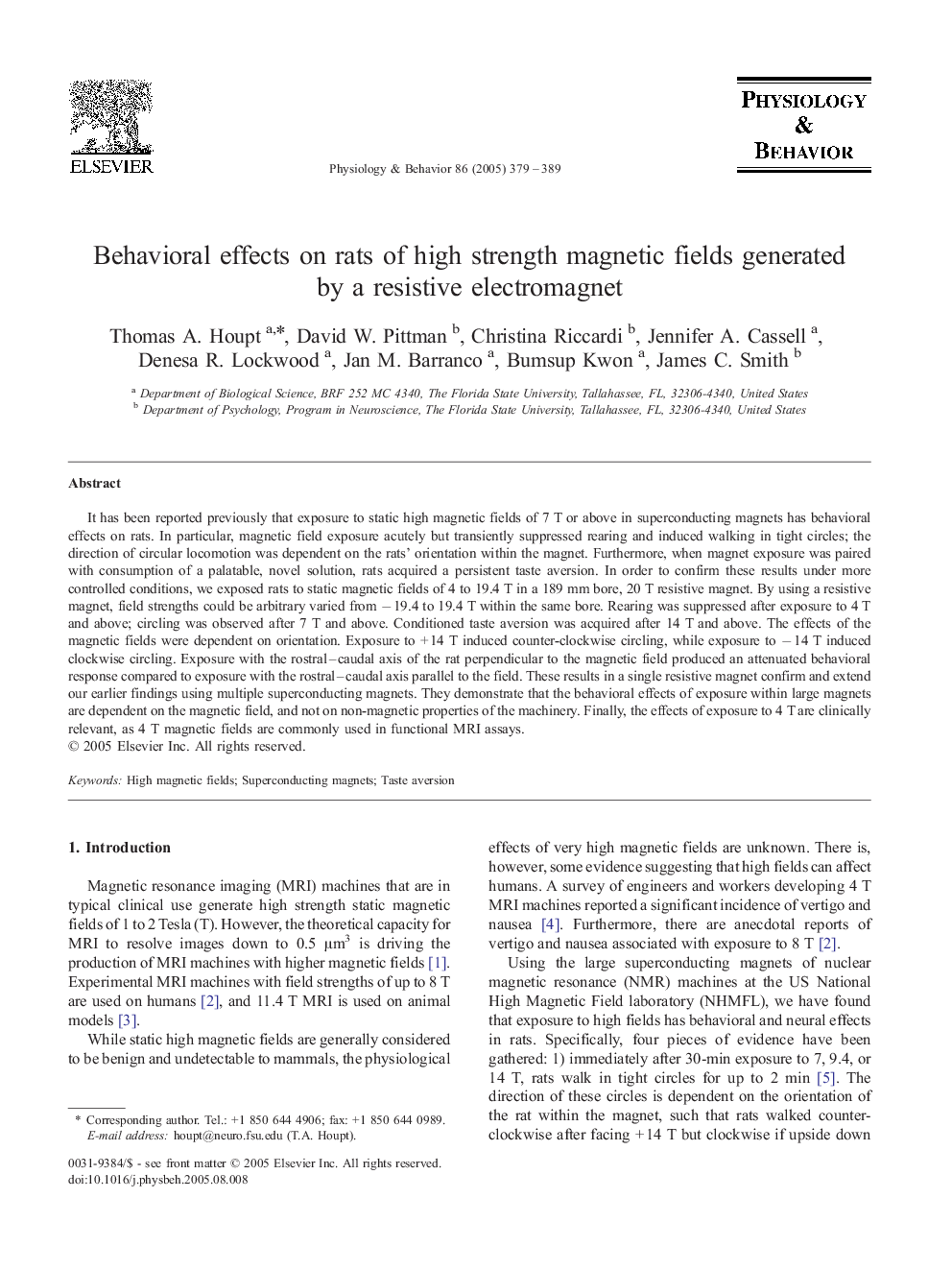| کد مقاله | کد نشریه | سال انتشار | مقاله انگلیسی | نسخه تمام متن |
|---|---|---|---|---|
| 9149591 | 1166427 | 2005 | 11 صفحه PDF | دانلود رایگان |
عنوان انگلیسی مقاله ISI
Behavioral effects on rats of high strength magnetic fields generated by a resistive electromagnet
دانلود مقاله + سفارش ترجمه
دانلود مقاله ISI انگلیسی
رایگان برای ایرانیان
کلمات کلیدی
موضوعات مرتبط
علوم زیستی و بیوفناوری
بیوشیمی، ژنتیک و زیست شناسی مولکولی
فیزیولوژی
پیش نمایش صفحه اول مقاله

چکیده انگلیسی
It has been reported previously that exposure to static high magnetic fields of 7 T or above in superconducting magnets has behavioral effects on rats. In particular, magnetic field exposure acutely but transiently suppressed rearing and induced walking in tight circles; the direction of circular locomotion was dependent on the rats' orientation within the magnet. Furthermore, when magnet exposure was paired with consumption of a palatable, novel solution, rats acquired a persistent taste aversion. In order to confirm these results under more controlled conditions, we exposed rats to static magnetic fields of 4 to 19.4 T in a 189 mm bore, 20 T resistive magnet. By using a resistive magnet, field strengths could be arbitrary varied from â 19.4 to 19.4 T within the same bore. Rearing was suppressed after exposure to 4 T and above; circling was observed after 7 T and above. Conditioned taste aversion was acquired after 14 T and above. The effects of the magnetic fields were dependent on orientation. Exposure to + 14 T induced counter-clockwise circling, while exposure to â 14 T induced clockwise circling. Exposure with the rostral-caudal axis of the rat perpendicular to the magnetic field produced an attenuated behavioral response compared to exposure with the rostral-caudal axis parallel to the field. These results in a single resistive magnet confirm and extend our earlier findings using multiple superconducting magnets. They demonstrate that the behavioral effects of exposure within large magnets are dependent on the magnetic field, and not on non-magnetic properties of the machinery. Finally, the effects of exposure to 4 T are clinically relevant, as 4 T magnetic fields are commonly used in functional MRI assays.
ناشر
Database: Elsevier - ScienceDirect (ساینس دایرکت)
Journal: Physiology & Behavior - Volume 86, Issue 3, 15 October 2005, Pages 379-389
Journal: Physiology & Behavior - Volume 86, Issue 3, 15 October 2005, Pages 379-389
نویسندگان
Thomas A. Houpt, David W. Pittman, Christina Riccardi, Jennifer A. Cassell, Denesa R. Lockwood, Jan M. Barranco, Bumsup Kwon, James C. Smith,